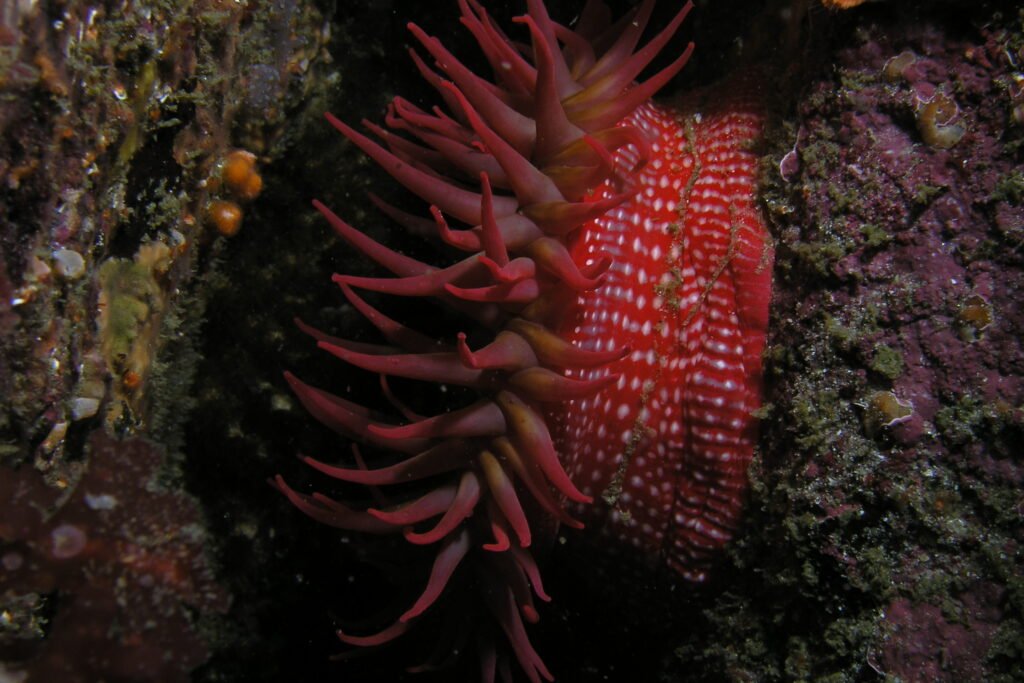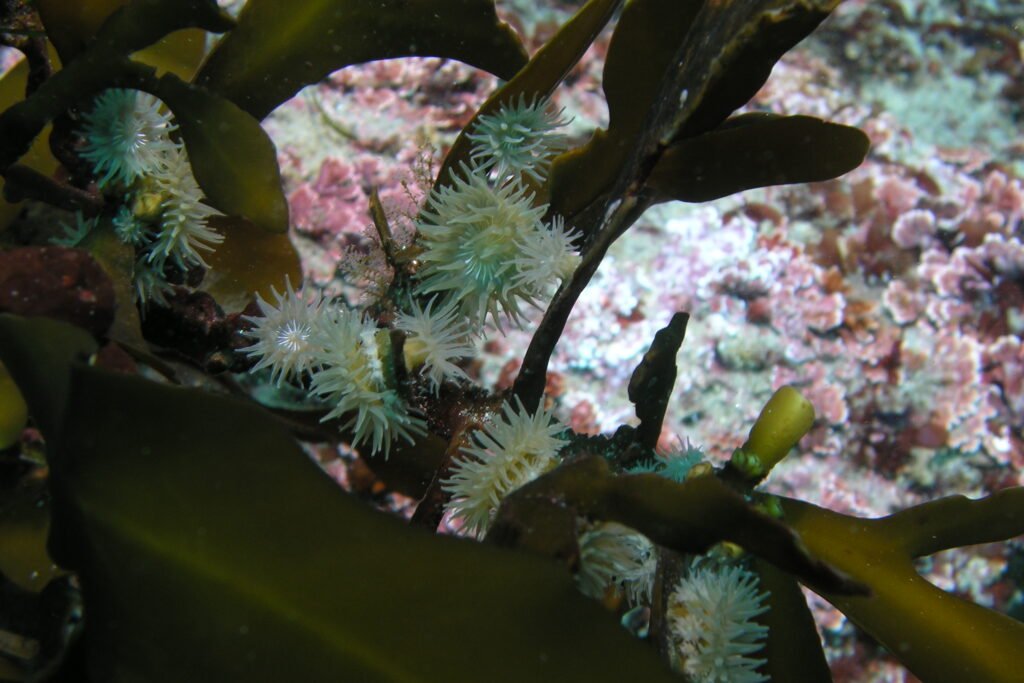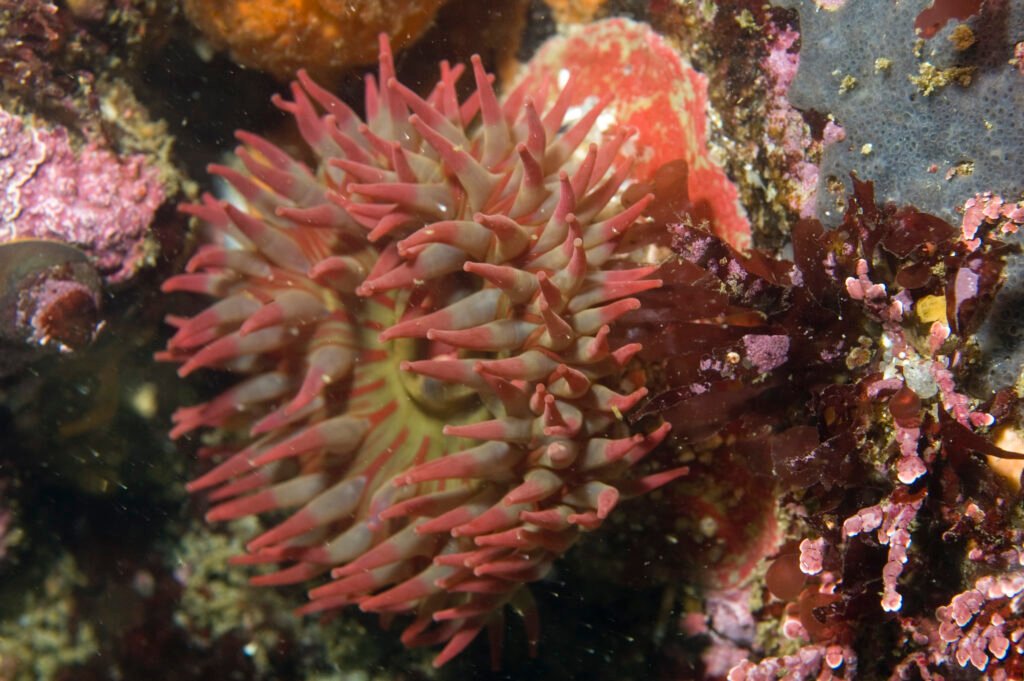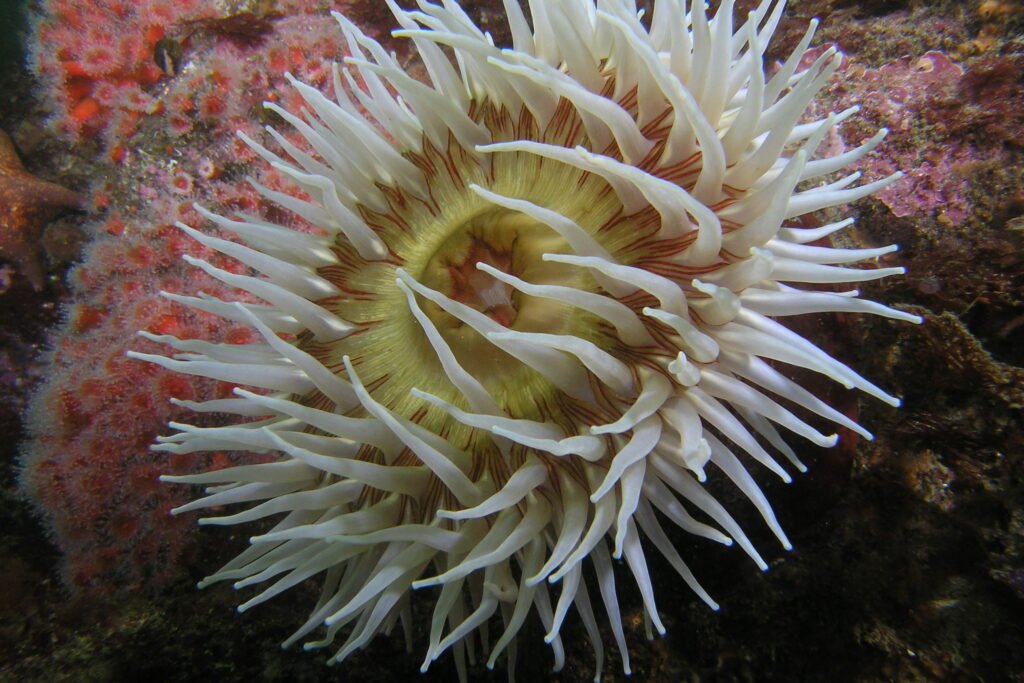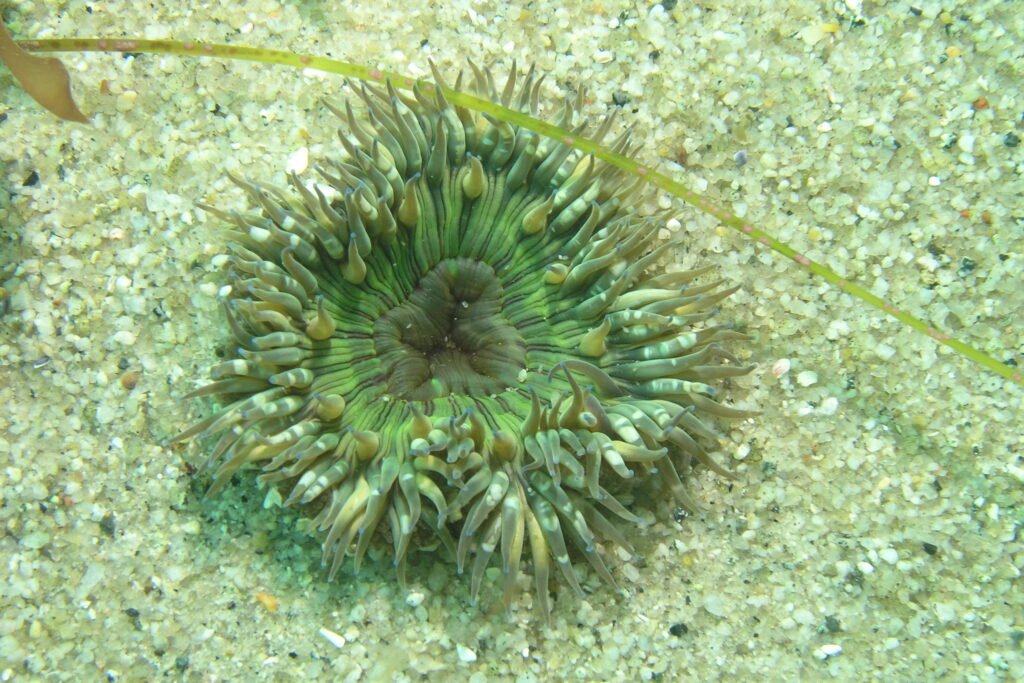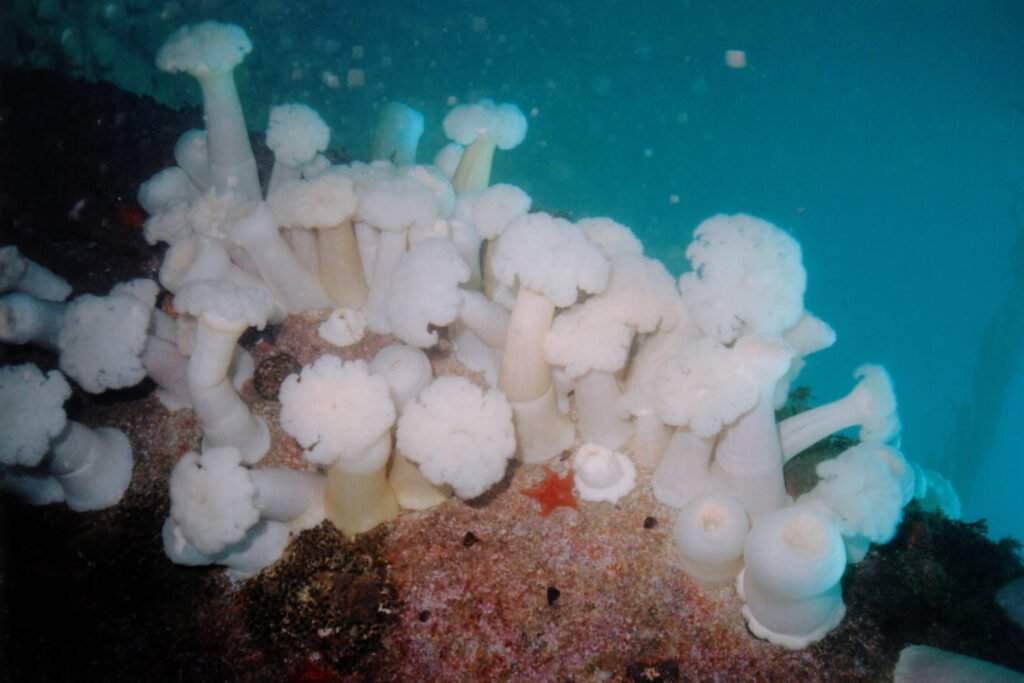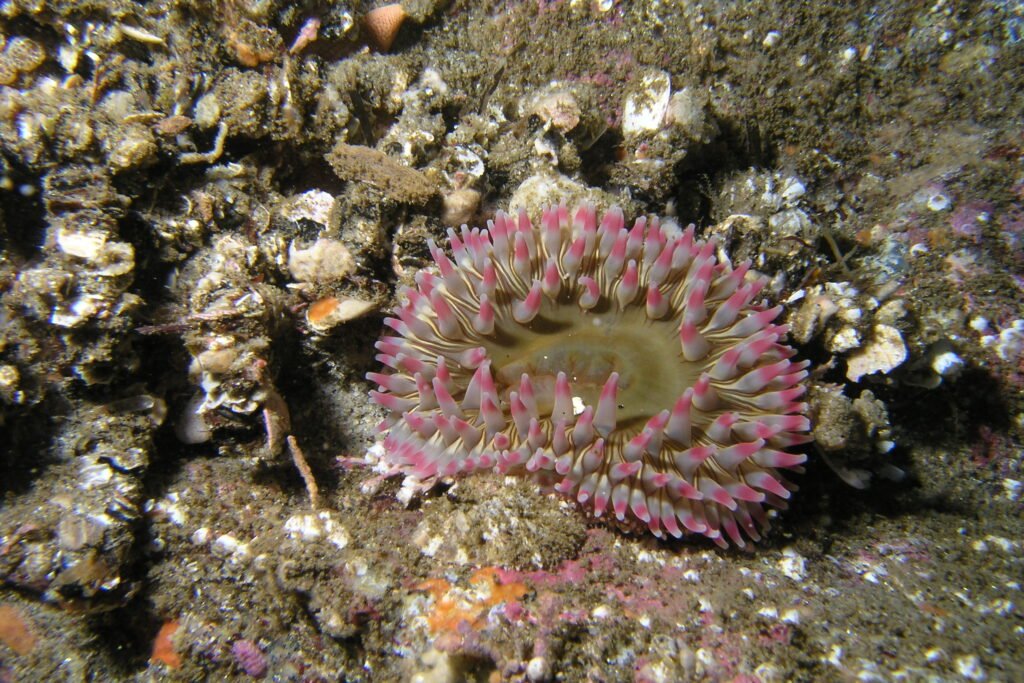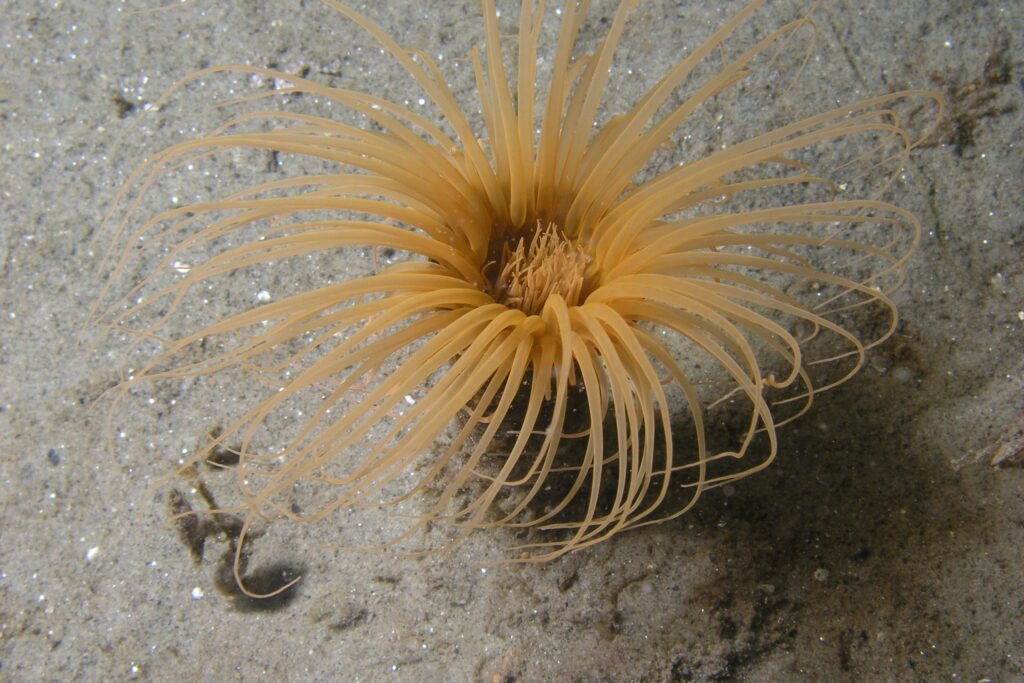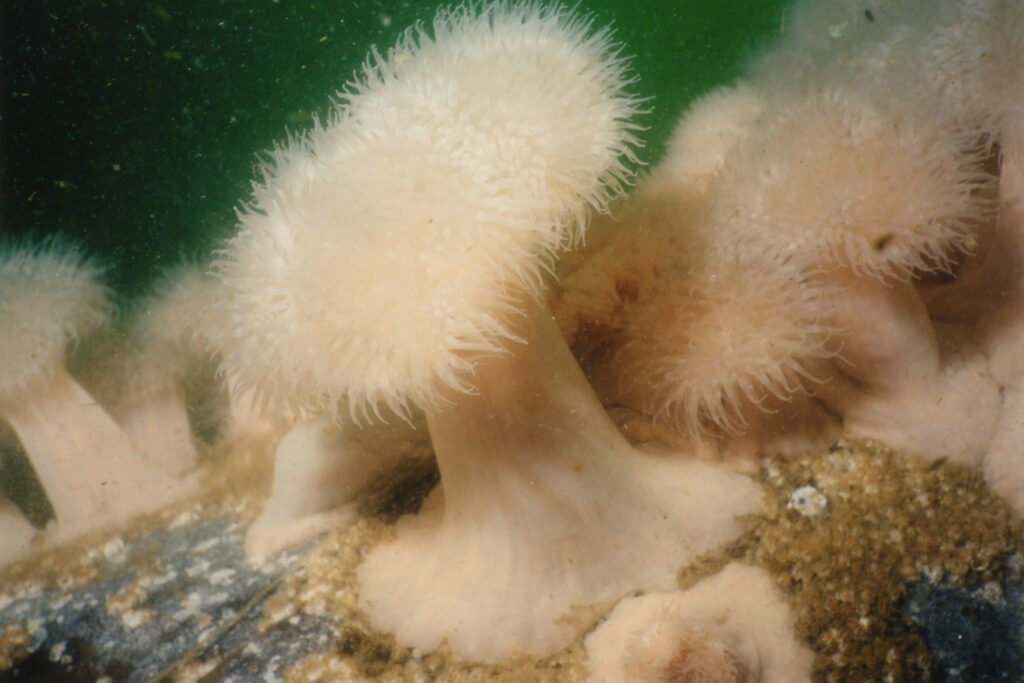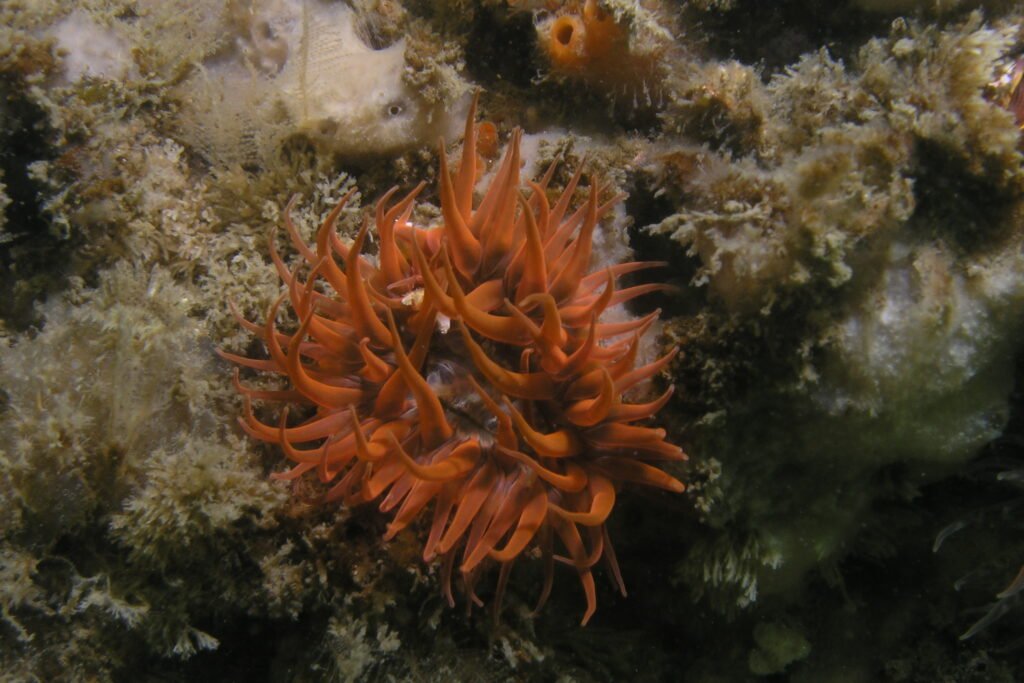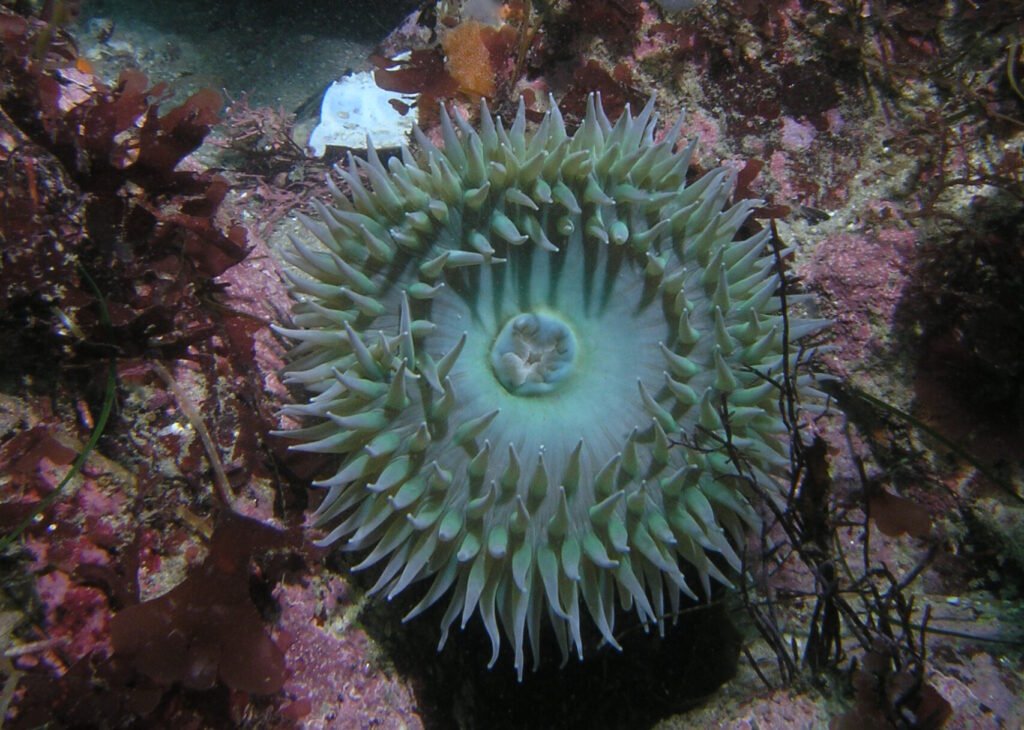Physical Description
The White-Spotted Anemone (Urticina lofotensis) is a marine invertebrate characterized by a muscular column topped with a ring of tentacles. Typically 5 to 20 centimeters in diameter, it boasts distinctive white spots amidst hues of red, orange, or brown.
Habitat and Geographical Range
White-Spotted Anemones inhabit cold North Atlantic waters, including regions like the Lofoten Islands in Norway. They prefer rocky substrates in intertidal zones and shallow waters.
Diet and Reproduction
Carnivorous feeders, White-Spotted Anemones consume small fish, crustaceans, and plankton using their tentacles armed with nematocysts. Reproduction involves external fertilization, with eggs and sperm released into the water column.
Physical Threat to Humans
While not aggressive, White-Spotted Anemones possess venomous nematocysts in their tentacles, potentially causing irritation or allergic reactions upon contact.
